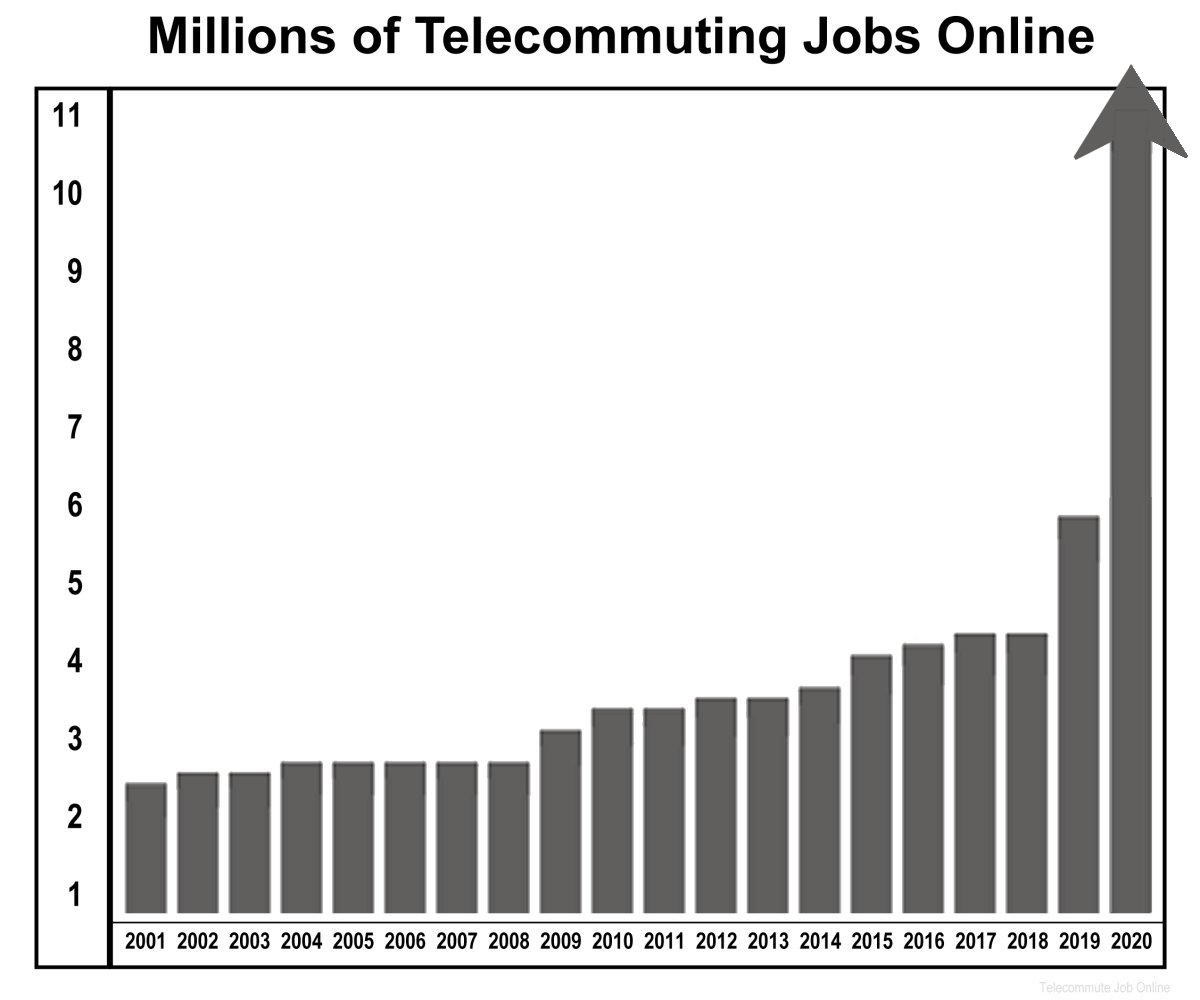There is no doubt if we learned anything in 2020, it was how to increase the number of teleworkers thanks to the coronavirus. 2020 telecommute statistics jobs online skyrocketing and final numbers are yet to come. The resulting lockdown in the USA forced many workers to telecommute and move their job online to keep our country’s economy afloat during the COVID 19 pandemic.
Statistics show a general growth in telecommuting and working from home in the 2000s, from 2001 to 2019, then a huge spike in telecommuters in 2020 thanks to the United States’ response to keep it moving through the lockdown, boasting nearly 80 million workers telecommuting and continuing to raise daily.
Those in non-essential job positions who were able to convert their jobs to telecommuting, working remotely, or from home, they were able to keep their positions and thrive, while others were forced to accept federally-enhanced unemployment compensation while under “Stay Home, Stay Healthy” restrictions.
While these changes in workstyles are considered temporary while those who previously worked in an office or cubicle are now working from home, there is a growing trend that is seeing employers re-evaluating their overhead costs.
Employee productivity is up, and costs to run businesses, organizations, and government agencies have dropped tremendously, as more workers are able to move their jobs online.
There is a good chance that if you are currently working from home that this may not be as temporary as you might have thought. Employers all over our nation are rethinking and reimagining the way businesses and organizations will be run in the future, and you are looking at a significant test run in action right now.
The future will see telecommuting jobs (office workers working from home full or part-time) turning into remote work. You might think that telecommuting and remote-working are one and the same. While they are similar, the main distinction is that a telecommuting job assumes that there is some commuting done to and from work, where the commute has been replaced by working via the Internet or teleconferencing.
Remote work represents the type of job that may be conducted disconnected from any commute to and from the workplace. As such, a worker working from a remote office area or home may well be outside the geographical region where the employer is physically located.
Remote is far more highly sought after by employers because there is little or no physical space requirements which are a drain on overhead costs to accommodate employees at the workplace.
That said, not all teleworkers or remote workers work from home. Many choose to work from Internet cafes, coworking spaces, virtual offices, coffee shops, or other remote location(s) which may include any location where a laptop can be powered or charged, and a connection to the Internet is available.
Of course, there are many jobs that cannot be translated into online positions, but for those who can, this is the growing trend.
And if you are one of the one’s who has found himself or herself in a position to telecommute “temporarily” due to the coronavirus outbreak and subsequent lockdown, don’t be surprised when the restrictions are lifted that you discover that all (or nearly all) of your commute has been eliminated.
Employers are already looking for ways to exit their lease contracts, as they are finding that telecommuting and transitioning to jobs online is a far better and more cost-effective way to conduct their affairs.
Telecommuting and jobs online are the new normal.
